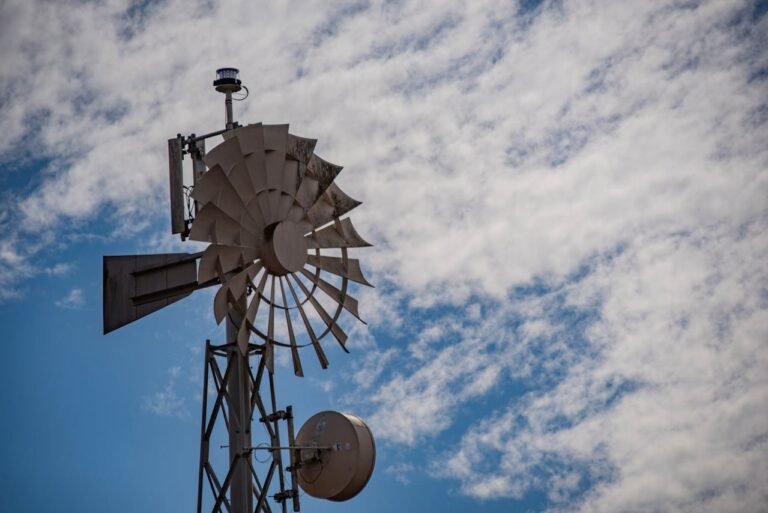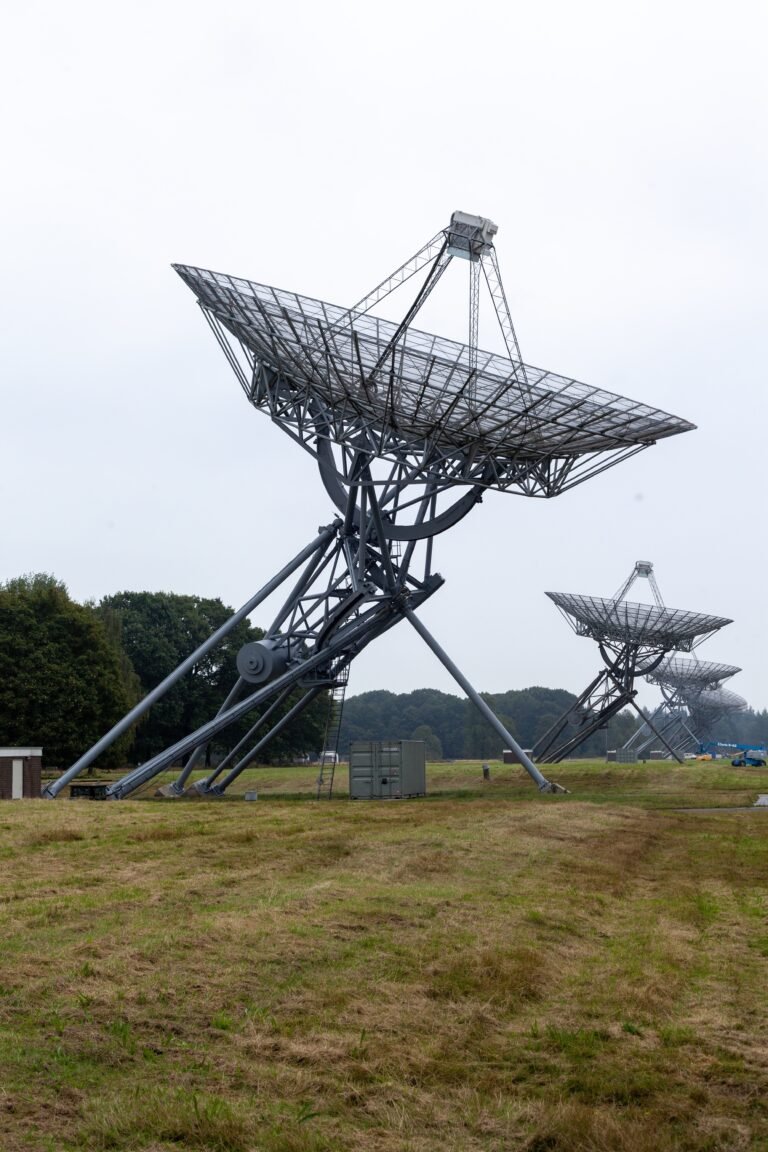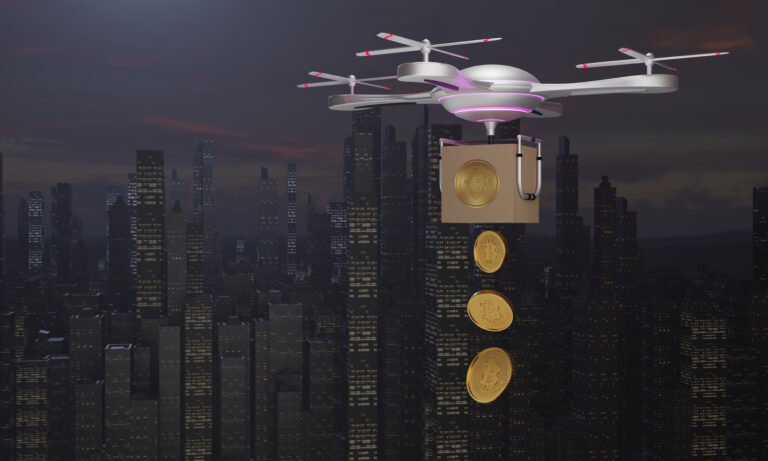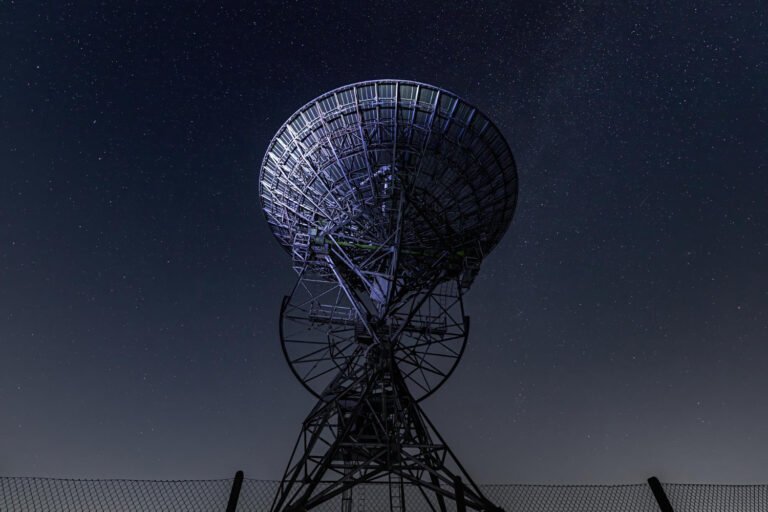The Dark Side of Space Internet: 7 Risks Nobody Talks About

Space internet promises to connect the entire planet: remote villages, cruise ships, disaster zones and whole countries with high-speed links beamed from constellations of low-Earth-orbit satellites. It’s exciting, transformative and, for many, unavoidable. But behind the marketing and glossy demos there’s a darker, messy side: environmental, technical, geopolitical and human-rights risks that aren’t getting equal airtime. This article digs into 7 hidden risks of the space internet, explains why each matters, shows what regulators and companies are (or aren’t) doing, and gives practical tips for users, communities and policy-makers who want the benefits without the worst of the fallout.

Table of Contents
1) Space debris & the Kessler risk — an orbital traffic jam that could trap us on Earth
The simplest nightmare for space internet: multiply the number of satellites by thousands and you multiply collision risk. Each collision can create fragments that make future collisions more likely — a runaway chain reaction known as Kessler syndrome. Studies and official space-environment reports warn that mega-constellations significantly increase collision probability in crowded LEO (low Earth orbit) bands, raising the chance of long-lasting, self-sustaining debris fields that could endanger satellites, crewed missions and future space activity. ESA Proceedings Database
Why this matters for space internet: companies rely on thousands of operational satellites for global coverage. If collisions or fragmentation events remove large numbers of satellites from service, that could cripple a provider’s network and create decades-long hazards for everyone who uses or operates in LEO.
What recent evidence shows: official reports show increased fragmentation events and thousands of new debris objects in recent years; mega-constellations are a major contributor to orbit population growth. European Space Agency
2) Cybersecurity and single-point failures — big networks, bigger attack surface
A global network of thousands of satellites, ground stations, routing hubs and user terminals is a complex attack surface. Space internet systems depend on software orchestration, on-orbit routing, and terrestrial backbone integration — a failure or exploit in any of those layers can cause wide outages or even hijack traffic.
Real world flag: major providers have experienced significant outages that illustrate the fragility of these distributed systems. For example, a high-profile Starlink outage in July 2025 affected tens of thousands of users and sparked questions about root causes (software bug, misconfiguration or cyberattack). Large outages show how dependent users — from households to governments — can quickly lose connectivity. Reuters
Cyber-risks to watch: supply-chain attacks on ground equipment, interception or jamming of L-band/Ku/Ka links, firmware vulnerabilities in user terminals, and exploitation of satellite control systems. Even when traffic is encrypted, metadata, routing choices, or outages can be abused. 5minutebreach.com
3) Surveillance, privacy and jurisdictional gray zones — whose laws apply when your packets orbit the Earth?
Space internet confuses traditional rules about data jurisdiction. A packet from a user in Country A could be bounced through satellites owned by a company headquartered in Country B, passing through ground stations on several continents. That raises thorny questions:
- Which country’s laws govern lawful intercepts?
- Who can compel data disclosure?
- Which privacy protections apply if a satellite operator is a private company with global reach?
Companies claim encryption protects users, but metadata, connection logs and the possibility of compelled access by governments or backdoors remain concerns. Independent observers and privacy advocates have repeatedly urged clearer rules on cross-border data flows for satellite networks. 5minutebreach.com
4) Geopolitical dependency & national security risks — other nations’ networks on which you rely
Space internet constellations are not just commercial products; they’re strategic infrastructure. Governments and militaries are using and testing commercial LEO capacity for communications, and some countries depend on privately-owned constellations for critical links. That creates geopolitical vulnerabilities:
- A private operator based in one country may be compelled to comply with that country’s security directives.
- Conflicts or sanctions can suddenly disrupt access or create access inequalities.
- Vendors may be restricted from selling terminals or services into certain markets for national-security reasons. Reuters
Industry voice: defense and aerospace firms have warned against over-reliance on a single corporate provider for sovereign communications, and several governments are exploring or procuring alternative, controlled constellations. Reuters
5) Environmental damage beyond debris — light pollution and atmospheric effects
Satellite megaconstellations affect more than just other satellites. Astronomers have already reported that bright LEO satellites interfere with optical and radio observations; large numbers of re-entering satellites add metallic particulates into the upper atmosphere; and cumulative launches have non-negligible climate and pollution footprints.
- Astronomy impacts: professional and amateur astronomers report streaks and lost data in wide-field surveys as LEO satellites reflect sunlight. Space
- Atmospheric & climate concerns: repeated launches and the disposal of satellites could change upper-atmosphere chemistry at scale; studies and NGOs warn about unpredictable long-term effects and call for assessment. PIRG
6) Market concentration, affordability & digital inequality — winners, losers and a gated internet
The promise of universal access often glosses over how space internet might be packaged and priced. If a handful of global providers control direct broadband from orbit, commercial strategies could favor profitable markets, leaving low-income populations dependent on subsidized access or local ISPs. Market concentration also raises concern about anticompetitive behavior and long-term pricing.
Why this’s risky: infrastructure ownership concentrates power over global connectivity. When governments or communities need guaranteed access for education, healthcare or public safety, reliance on commercially priced services can create fragility and inequality. WhatIsMyIPAddress
7) The resilience problem — critical services and cascading failures
As hospitals, emergency services, maritime shipping, and even financial markets explore or adopt space internet for redundancy, a surprising perverse effect emerges: centralized constellations might create correlated failure modes. If many critical users choose the same satellite provider as a “backup,” a single outage or attack can knock out multiple systems simultaneously.
Example: a large outage or targeted disruption (software bug, solar storm, coordinated attack) could remove redundancy for many sectors at once, precisely when the redundancy is most needed. The July 2025 global outage referenced earlier is a cautionary example: a single provider’s failure affected tens of thousands of users, underscoring how dependence can translate into systemic risk. Reuters
Quick reference: Risk table
| Risk (short) | Probable severity | Likelihood (next 5–10 years) | Key consequence | Mitigation options |
|---|---|---|---|---|
| Orbital debris / Kessler | High | Medium–High | Long-term loss of LEO usability | Stricter deorbit rules, active debris removal, collision-avoidance coordination. European Space Agency |
| Cybersecurity failures | High | Medium–High | Large outages, data compromise | Strong encryption, supply-chain audits, redundancy. 5minutebreach.com |
| Surveillance / privacy | Medium–High | Medium | Cross-border data access, chilling effects | Clear jurisdictional rules, transparency, privacy-by-design. WhatIsMyIPAddress |
| Geopolitical dependency | High | Medium | Access cutoffs, strategic leverage | Multi-vendor procurement, sovereign constellations. Reuters |
| Light pollution / environmental | Medium | Medium | Science interference, unknown atmospheric impacts | Reflectivity mitigation, launch footprint limits. Space |
| Market concentration | Medium–High | Medium | Affordability, anti-competitive markets | Competition policy, subsidies for underserved areas. WhatIsMyIPAddress |
| Resilience shortfall | High | Medium | Cascading failures in critical systems | Distributed backups, multi-vendor SLAs, local infrastructure. Reuters |
Mitigations — what companies, regulators and communities are doing (and should do)
- Engineering fixes: many operators now design satellites with lower reflectivity, onboard collision-avoidance, and short post-mission deorbit plans. Standards for deorbit timelines (e.g., 5 years rule in some filings) help — but enforcement is uneven. The Public Interest Network
- Regulatory action: agencies such as the FCC are reviewing spectrum, emissions and equipment authorizations to reduce interference and national-security risks. More formal international coordination is needed for collision avoidance and debris mitigation. Federal Communications Commission
- Security & resilience: providers and governments are investing in hardened ground stations, better software development practices, supply-chain vetting and multi-provider redundancy in critical sectors. The private sector also runs bug bounties and third-party audits; however, the scale of coordination required is large. 5minutebreach.com
- Market & policy steps: some governments are explicitly planning sovereign or allied constellations, and purchasing capacity across multiple commercial providers to avoid single-vendor lock-in. Industry groups and NGOs press for fair access rules and pro-competition oversight. Reuters
Practical advice — what users, communities and sysadmins should do now
- Don’t put all your eggs in one orbital basket. For mission-critical services, design for multi-path connectivity (fiber + terrestrial wireless + at least two satellite vendors if possible).
- Treat space internet like any WAN provider: require contractual SLAs for critical services, insist on independent audits, and verify data-handling/jurisdictional clauses.
- Encrypt end-to-end and protect metadata where possible. Even if operator links are encrypted, application-level encryption prevents interception at higher layers.
- For local governments and NGOs: insist on transparency from providers about deorbit plans, collision-avoidance behavior and the environmental impact of their operations.
- For activists & scientists: continue to push for independent monitoring (astronomy, debris tracking) and public reporting on fragmentation events and outages. Space+1
Related links & resources (for further reading)
- ESA — Space Environment Report (annual updates & debris guidance). European Space Agency
- Reuters coverage of outages and industry warnings (case studies of resilience). Reuters
- Academic studies on mega-constellation collision risk and Kessler syndrome. ESA Proceedings Database
- NGO/advocacy reports on environmental harms of mega-constellations. PIRG
FAQs — 5–7 questions people ask about space internet risks
Q1: Is space internet safe for everyday users?
For ordinary browsing, streaming or remote work, space internet is functionally safe and comparable to terrestrial links in many respects. But “safe” depends on the context: if you require guaranteed, secure connectivity for critical infrastructure, you should evaluate provider SLAs, encryption practices and redundancy policies. 5minutebreach.com
Q2: Can satellites be hacked?
Yes. Satellites and ground infrastructure can contain software or hardware vulnerabilities. Operators invest heavily in cybersecurity, but the complexity and distributed nature of space internet increases attack surface. Treat satellite links like any other part of your network security plan. 5minutebreach.com
Q3: Will space internet make astronomy impossible?
Not impossible — but unmitigated growth of bright LEO constellations interferes with certain astronomical observations, particularly wide-field optical surveys. Industry and astronomers are working on mitigation (darker satellite coatings, operational avoidance), but the problem is real and ongoing. Space
Q4: Could a country lose access to space internet during a political dispute?
Potentially. Access depends on agreements, ground-station infrastructure and the operator’s willingness to serve a territory under geopolitical pressure. That’s why some governments prefer sovereign systems or multi-vendor procurement. Reuters
Q5: How likely is a full Kessler syndrome scenario?
Experts differ. Models show that the risk rises as orbital population grows; multiple fragmentation events can push the environment toward unstable growth. It’s not an immediate certainty, but the probability increases without strong mitigation measures. ESA Proceedings Database
Q6: Are there global rules to stop these risks?
There are conventions and national rules (e.g., licenses, deorbit requirements) but no single global enforcement body with teeth. International coordination is improving, but many experts call for stronger, binding global standards. Federal Communications Commission
Q7: If I live in a remote area, should I avoid space internet?
No — for many remote communities, space internet can be a game-changer for education, healthcare and commerce. The right approach is to demand transparent pricing, resilience guarantees, and to pair satellite access with community backup plans and privacy protections. WhatIsMyIPAddress
Conclusion — proceed, but don’t be naive
The space internet revolution brings enormous benefits — connectivity in places fiber can’t reach, rapid deployment after disasters, and new economic possibilities. But hype has outpaced sober assessment of the downsides. Orbital congestion, cyber risks, surveillance, geopolitical leverage, environmental effects and market concentration are not “somebody else’s problem.” They are systemic issues that require a mix of engineering, law, economics and civic pressure to address.
If we want the gains of global connectivity without trading away long-term safety or fairness, we need: enforceable international norms for debris mitigation; robust cybersecurity standards and audits; multi-vendor strategies for critical infrastructure; transparency on privacy and data-flow rules; and public policies that protect affordable access and scientific commons. The space internet should expand opportunity — not our vulnerabilities.





